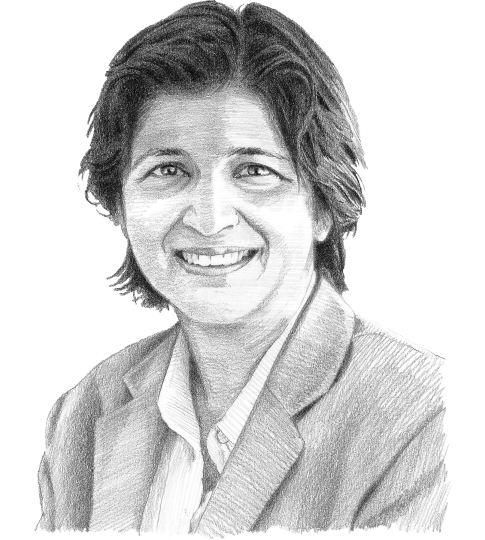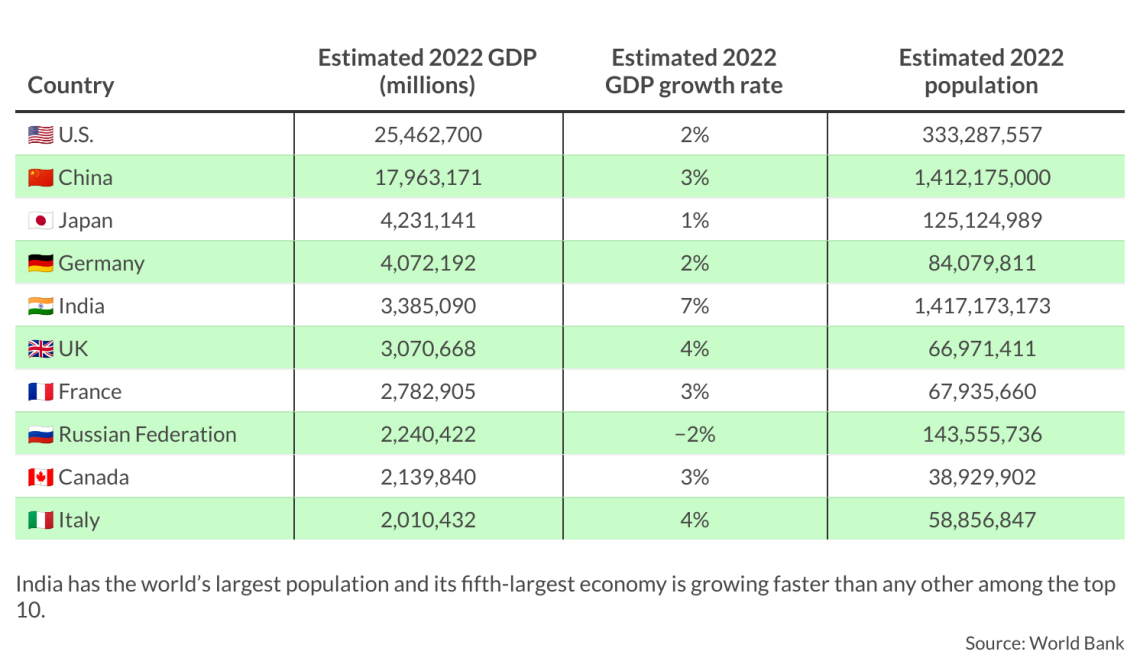India’s good year
The world’s most populous nation is strengthening its position through high-profile events and aligning with both Western and non-Western groupings.
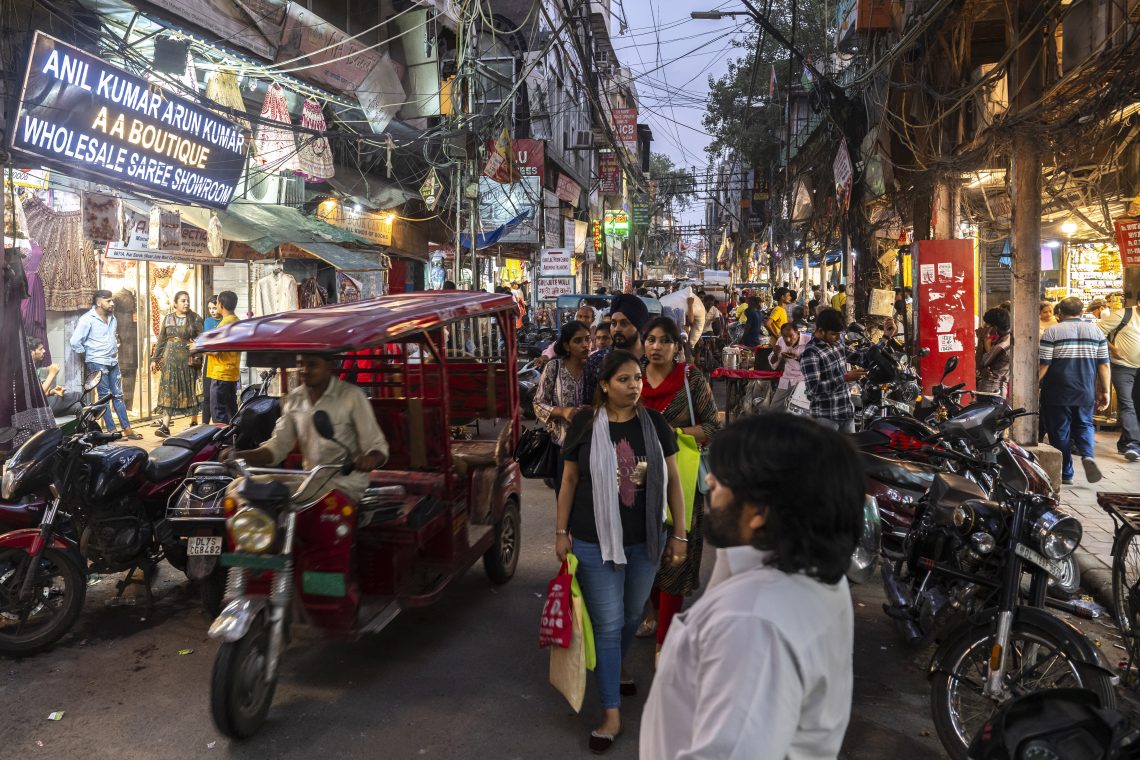
In a nutshell
- India’s star is on the rise economically, militarily and diplomatically
- New Delhi’s foreign policy emphasizes independence and multipolarity
- The nation’s global standing is reaping the benefits of closer U.S. ties
2023 has turned out to be India’s year. The multipolar world order that India has sought for over seven decades may not be a reality yet, but India is certainly in a unique position today. During the Cold War, New Delhi’s heft came primarily from its diplomatic clout through leadership of the nonaligned world. Today India is in a better place. It has economic and military potential besides diplomatic and soft power.
A post-colonial country and founding member of the nonaligned movement, India is at the heart of the United States-led Indo-Pacific strategy that seeks to counter the aggressive rise of China. Notwithstanding its deep alignment with the U.S., India participates in non-Western groupings that include both Russia and China. Such ties demonstrate a desire by Indian leaders to ensure their country is not viewed as a camp follower of the West. India’s strong emphasis on strategic autonomy and championing of the Global South – the former nonaligned world – is aimed as much at the Western world as it is a message to Russia and China.
On a tear: Participation in a bevy of high-profile events
For India, the world’s most populous country and fastest-growing emerging economy, the last 12 months have cemented the country’s position on the global high table. An August 2023 Global Attitudes Survey by Pew Research Center showed that 46 percent of citizens across 23 countries held a favorable view of India. This was especially true in the U.S. and among most of its allies in Asia and the West.
India convened the Global South virtual summit with 125 countries in January 2023. New Delhi was invited to attend the G7 meeting in Japan and participated in the Quad summit held soon after. In July, India hosted the China-led Shanghai Cooperation Organisation (SCO) summit. In August, India was at the BRICS summit that welcomed six new members and, in September, India hosted the G20 summit, the first ever to be held in South Asia, with leaders of 43 countries attending.
India was invited to the APEC (Asia-Pacific Economic Cooperation) summit in November and, in January 2024, India will host the Quadrilateral Security Dialogue (Quad) leaders’ summit in New Delhi. India also aims to host the summit on the eve of India’s Republic Day to showcase the country’s global heft.
America’s grand strategy seeks to counter China’s military buildup and economic penetration with the support of allies and partners across the globe. A key area of geopolitical contention for the U.S. and China is the Global South. China’s appeal within the Global South lies with semi-authoritarian countries that seek economic investment.
India’s historical clout within the former nonaligned developing world makes it an option for countries that no longer view the U.S. as the sole superpower. New Delhi has, over the decades, cemented its global profile of a post-colonial country that avoided military coups and remained a democracy. Despite criticism for democratic backsliding and perceived intolerant Hindu nationalism under Prime Minister Narendra Modi, India is respected by many developing nations for educating its people while building its economy and military, all within the context of achieving a multi-religious, multi-ethnic and pluralistic society. Over the last few years, India has used its presence in multilateral groupings to build its credentials as a global power that has relations with Russia and countries in the Global South and yet maintains a close partnership with the West.
Facts & figures
India’s priorities reveal a desire to burnish its historical claim to leadership of the world’s have-nots. This was reflected in the expansion of both BRICS and the G20 to include countries primarily from the Global South and in the various aims of the G20 like climate financing, debt sustainability, digital public infrastructure and health. India has long viewed itself as a first responder for humanitarian assistance and disaster relief in the Indian Ocean and as a leading provider of developmental assistance. During Covid-19, India initiated “vaccine diplomacy” and during G20-related meetings, health remained a key priority area.
In addition to its various multilateral engagements, India branched out its diplomacy in several regions. While there is a lot of global focus on the Quad – a grouping including Australia, Japan, India and the U.S. – its counterpart I2U2 (India, Israel, the United Arab Emirates and the U.S.) continues its work under the radar.
The recently announced India-Middle East-Europe Economic Corridor (IMEC) is a syncing of India’s strong partnership with the Middle East with global geopolitics. The U.S. seeks a Europe that is less dependent on Russian energy, a stable Middle East that has markets other than China and Russia, and an India that will have access to energy, investment and markets. IMEC is the solution to all these challenges without requiring an American security presence or massive investment.
India’s global ambitions are benefitting from geopolitical realities and America’s grand strategy. While every U.S. president going back to Bill Clinton has championed a strong partnership with India, U.S. President Joe Biden’s administration especially has placed a strategic bet on India. 2023 was full of strong signals: a state visit of Prime Minister Modi in June and Mr. Biden’s September visit to India, with substantive deliverables, primarily in defense and technology.
At a time when the U.S. seeks to deny high-end technology to its competitor, China, Washington appears willing to share the crown jewels of its civilian and military technology with a non-security ally, India. The U.S. would like to convince countries around the world that there is an alternative to China, and that is India. As the only other nation with more than a billion people, India is often characterized as China’s biggest potential rival in Asia. India’s democratic credentials, economic potential and soft power reflected in its developmental aid across Asia and Africa also make it an alternative to China. Additionally, there is an American desire to wean India away from collaboration with Russia in the defense sector. Finally, India is a key bridge to the Global South.
Over the last few years, India has boosted its bilateral engagements not just with the U.S. and its security allies in Europe and Asia, but with countries in the Middle East, Africa and Southeast Asia.
India and the UAE have signed a free-trade agreement and New Delhi is in talks with Israel for another such accord. India’s economic and security ties with Egypt and Saudi Arabia have deepened.
India has also enhanced defense sales, enhanced regional connectivity and bolstered high-level diplomatic engagements with Southeast Asia. The 2022 “State of Southeast Asia” survey ranked India third, after the U.S. and China, as the partner of choice. India’s doctrine of strategic autonomy appeals to a region that, while wary of China’s rising economic and military dominance, wants to avoid taking sides in the peer rivalry between the U.S. and China.
Both the Middle East and Southeast Asia are critical to the American and European grand strategy – China has deepened its inroads into these regions and India’s closer ties with these regions are welcomed.
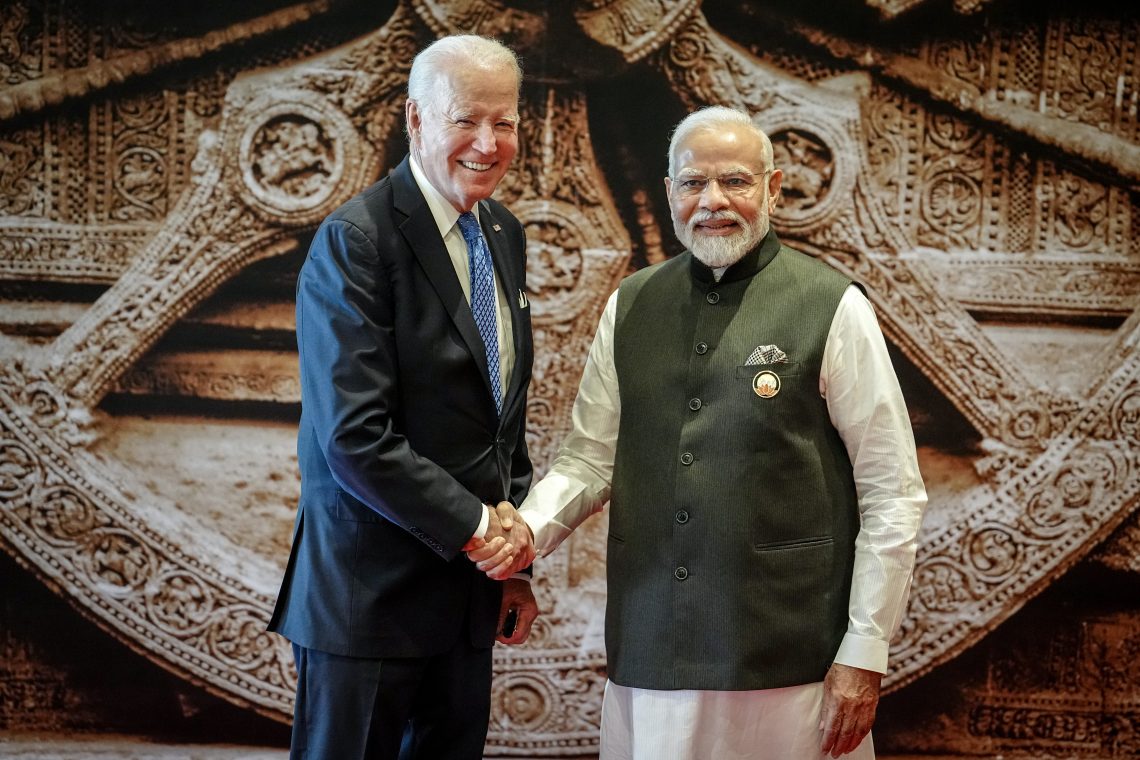
Moving forward
In 2020, in his book titled “The India Way,” India’s External Affairs Minister Subrahmanyam Jaishankar argued that India’s policy in the coming years would be “to engage America, manage China, cultivate Europe, reassure Russia, bring Japan into play, draw neighbors in, extend the neighborhood and expand traditional constituencies of support.” To some extent, India’s aggressive endeavors appear to have been successful. However, that is a function as much of global geopolitics as it is of India’s summit diplomacy.
Many want India to play a bigger role both regionally and globally. However, New Delhi has a short time frame in which to make the most of regional and global geopolitics to achieve its goals. For India to benefit from the chorus for closer ties by many countries, it needs to focus on building its economic power and military capability.
The Indian state is paternalistic and protectionist in the economic realm and skeptical of free trade. If India wants to become a part of the global supply chain network, actions like banning export of rice or wheat, or import of laptops do not help. To boost foreign investment, predictable and consistent regulatory and tax policies are critical. To truly become the alternative to China as the “factory to the world,” the manufacturing sector needs to grow and antiquated land, labor and capital markets need modernization.
The Indian state has historically focused inward when it comes to security, and projection of power has been limited to the Indian subcontinent. To project power in the Indian Ocean and beyond, India would need to focus less on issues of identity politics and the past, and instead invest in its human capital, focus on economic reforms and modernize the military. With national elections due in 2024, and countries all over the world turning more populist, this appears unlikely in the short run.
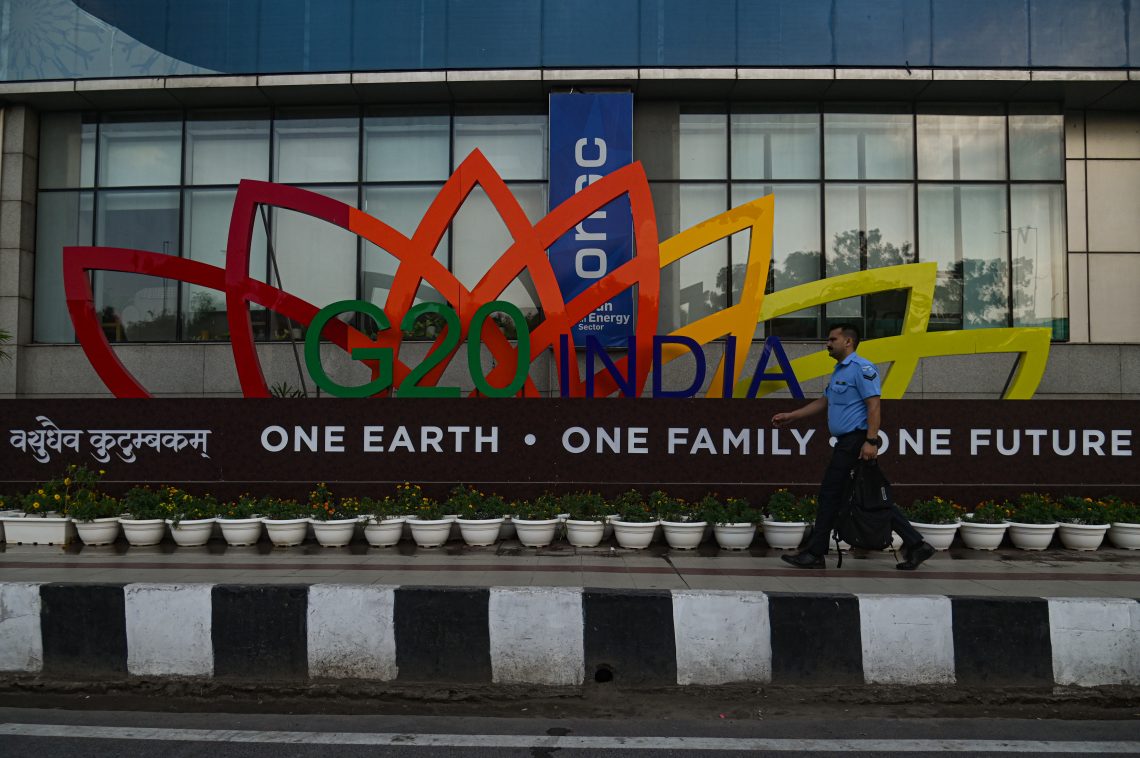
Scenarios
So, with all this in mind, where is India going and how it will play its cards in the coming months and years?
Most likely: India rides high
With the world wooing India, the most likely scenario is that New Delhi will leverage its popularity to the maximum extent possible, without making any concessions. Increased leverage will come from the desire of other nations to find an economic alternative to China, to push back against Beijing’s military aggression and to wean India – and the rest of the Global South – away from China and Russia.
A second possibility: Protectionism hurts India’s popularity
If, however, companies continue to face protectionist and regulatory challenges inside India, then they may prefer to either stay in China or move to countries in Southeast Asia, like Vietnam, the Philippines and Indonesia. If that happens in a large enough number, it may lead the Indian state to adjust its economic policies. Historically, the Indian state has implemented economic reforms only when it has faced internal pressure brought on by external impulses.
A third possibility: New Delhi becomes wary of the China-Russia alliance
Similarly, India has a historical preference for a basket of suppliers when it comes to the military or energy. As of now, India is being offered state-of-the-art technology by the U.S. and others. While this will reduce defense purchases from Russia, India is unlikely to change its strategic calculus about Moscow’s relevance. That calculus is facing a challenge, however, in the long run: the closer Moscow gets to Beijing, the more New Delhi will be concerned that the next time there is a Sino-India conflict, Russia may stay neutral or support China.
For industry-specific scenarios and bespoke geopolitical intelligence, contact us and we will provide you with more information about our advisory services.
